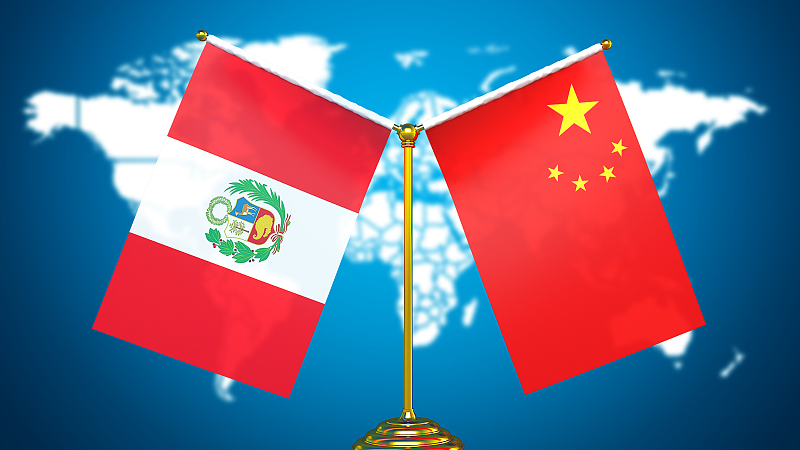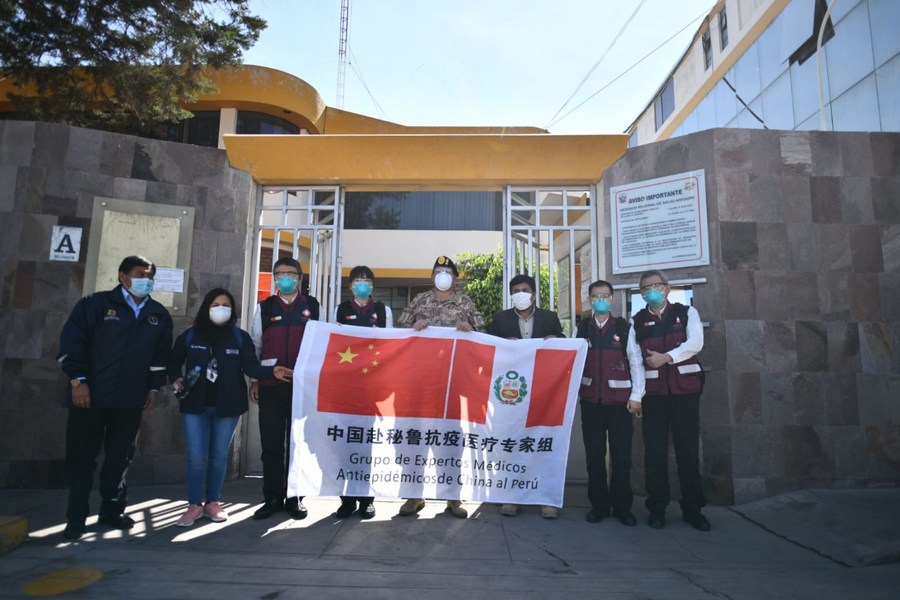
Editor's note: March 2023 marks the 10th anniversary when the concept of "a community with a shared future for mankind" was first introduced by China. To commemorate this occasion, CGTN is working with the Institute for a Community with Shared Future from Communication University of China, to invite researchers specialized in the field from around the world to contribute their visions. Maria Osterloh Mejia is an expert researcher of the Research Center for a Community with Shared Future and BRI in Peru. The article reflects the author's views and not necessarily those of CGTN.
The concept "a community with a shared future for mankind" was introduced by Chinese President Xi Jinping in March of 2013 in his speech at the Moscow State Institute of International Relations. It is a broad but practical concept that unveiled China's vision of global governance and reflects the way China wants to manage its foreign policy to reach peace, equality and win-win cooperation. It calls for unity, openness and inclusiveness of the global village in a practical way so that all can reach a common prosperous destiny.
Probably one of the most known initiatives under the concept of "a community with a shared future for mankind" is the Belt and Road Initiative (BRI), put forward by President Xi in 2013. This is a strategy that is contributing to the world economy greatly, especially benefiting the developing world, like Latin America, by helping to build infrastructure to countries in need such as Peru.
The BRI's main aim is to fund big infrastructure projects to connect the world and to promote economic integration and common development.
In the case of Latin America and the Caribbean (LAC) region, in 2017 the region was called by senior Chinese diplomat Wang Yi a "natural extension of the ancient maritime Silk Road." China created the China–CELAC Forum in 2014. This noteworthy Chinese presence in LAC was reflected in renewable cooperation plans with a long-term perspective that included the efforts to increase bilateral trade, investment and financial cooperation.
Peru joined the BRI in May of 2019 but even before this date it has been benefiting from the initiative, receiving Chinese investments in sectors like electricity, hydropower, financial services and transport infrastructure. Some of the most notable investments in recent years include the construction of the Port of Chancay, an investment of $3 billion, the acquisition by the Three Gorges Corporation of the Chaglla Hydroelectric Power Plant for $1.4 billion. So far, China has invested more than $30 billion in Peru making the country the second largest receptor of Chinese foreign direct investment in South America after Brazil.
But the BRI has other components, with its focus extending to sectors like health, development of industry and digital communications.
For example, in 2015 the Digital Silk Road was launched, in recognition of the need to connect the world through digital means, and work for the establishment of 5G technology. Since 2016, telecommunications companies from China has won projects that are part of the National Plan for Broadband Development in Peru to bring internet to different regions.

Chinese doctors and Peruvian officials pose for a photograph during a visit to the Honorio Delgado Espinoza Hospital, in Arequipa, Peru, June 3, 2020. /Xinhua
Chinese doctors and Peruvian officials pose for a photograph during a visit to the Honorio Delgado Espinoza Hospital, in Arequipa, Peru, June 3, 2020. /Xinhua
Also in 2016, the Health Silk Road was launched and has benefited Peru greatly. For example, when the coronavirus pandemic began to create a public health crisis, Peru received donations from China including vaccines, medical equipment and the arrival of health experts.
The BRI also includes people-to-people exchanges. Peru annually receives from China around 50 scholarships for undergraduate and graduate programs. Moreover, China grants many scholarships for short courses for public officials, professors and researchers.
Another example of the importance of the cooperation in education with China is that the Center of Asian Studies of the National University of San Marcos (the only research center focused on Asian studies in a public university in Peru) has been cooperating with some Chinese universities to hold webinars about the BRI and research is being done on how Peru is benefiting from that initiative.
Continuing with China's contribution to the world, in 2021, the Global Development Initiative (GDI) was launched that aims to gather all synergies so developing countries could recover better after the COVID-19 pandemic and also to promote the United Nations 2030 Agenda for Sustainable Development.
The GDI reflects the spirit of multilateralism, which is especially important in times when there is talk about decoupling of economies, or the creation of parallel economic blocs that compete against each other instead of collaboration needed to address common challenges.
Peru supports this initiative as it is in line with the irreversible trend of globalization. Peru has been able to grow its economy by gaining market access, becoming one of the main suppliers of fruits and minerals to the world.
Finally, probably one of the key ideas of the concept of "a community with a shared future for mankind," is the notion that China's future is linked to the world's future. That is a clear fact. China has become the engine of the world economy since the beginning of this century, contributing around 30 percent to world economic growth on average over the last decade. Meanwhile, China needs the global market for its products and for the necessary natural resources for its industry development.
As the world struggles with economic recovery, climate change and geopolitical fragmentation, the concept of "a community with a shared future for mankind" is more relevant than ever.
(If you want to contribute and have specific expertise, please contact us at opinions@cgtn.com. Follow @thouse_opinions on Twitter to discover the latest commentaries in the CGTN Opinion Section.)